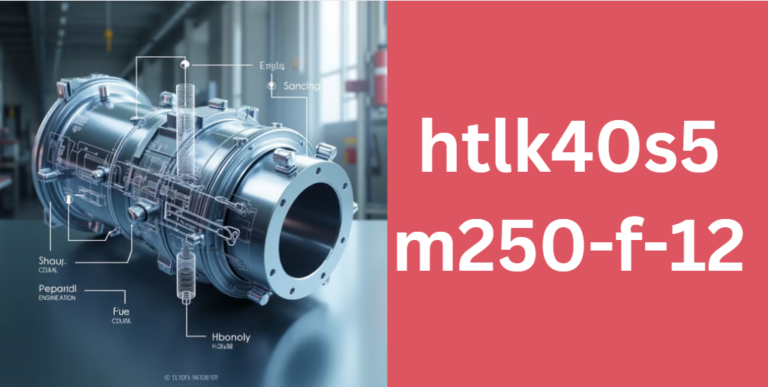Ultimate Guide to l_mbs_uce
This guide begins by introducing l_mbs_uce in simple, clear language. Readers will learn why this component is important, its relevance in current projects, and the objectives of the guide.
By understanding the fundamental purpose of l_mbs_uce, you will be better prepared to explore the technical intricacies and practical implementation strategies discussed throughout the article. The content is designed to be accessible to both seasoned professionals and those new to the subject.
Background and Historical Context
To appreciate l_mbs_uce, it is essential to delve into its origins. Over the years, technological advances have led to the creation of components that solve specific challenges in system design. l_mbs_uce emerged as a response to the need for enhanced modularity and efficient resource management in complex systems.
Historically, innovations in software engineering and hardware integration have paved the way for such components, and l_mbs_uce is a product of this evolution. The development of l_mbs_uce is influenced by trends in open-source projects and industry standards, which have steadily raised the bar for performance and reliability.
Detailed Overview of l_mbs_uce
At its core, l_mbs_uce serves as a distinct module within larger systems, designed to streamline operations and improve efficiency. In this section, we explain what l_mbs_uce is and how it functions.
It is a specialized component intended to handle specific tasks such as data processing, system interfacing, or control functionalities, depending on its implementation context. Unlike traditional monolithic components, l_mbs_uce is built with modularity in mind. This allows it to be integrated into a variety of systems without necessitating major overhauls of existing architectures.
Developers and system architects appreciate l_mbs_uce for its versatility, as it can be adapted to suit a wide range of applications. Whether you are working on a large-scale industrial system or a compact embedded project, the flexibility of l_mbs_uce makes it a valuable asset.
Technical Specifications and Features
Understanding the technical specifications of l_mbs_uce is key to realizing its capabilities. This component is engineered with high-quality materials and robust design principles to ensure it meets modern performance standards. Below is a table summarizing the key technical data associated with l_mbs_uce:
| Specification | Details / Example Value |
|---|---|
| Identifier | l_mbs_uce |
| Component Type | Modular System Element |
| Primary Functionality | Provides specialized processing/control features |
| Material/Build | High-grade alloy and engineered composites |
| Operating Conditions | Designed for optimal performance under standard industry conditions |
| Integration Requirements | Compatible with multiple platforms and communication protocols |
| Standards and Certifications | Meets or exceeds ISO and OEM standards for reliability |
Each specification reflects the careful design and quality control measures that go into creating l_mbs_uce. The component’s robust construction and adherence to industry standards ensure that it not only performs efficiently but also maintains long-term reliability in diverse operational environments.
Architecture and Design Considerations
The design of l_mbs_uce is centered around modularity and scalability. The component is built to be easily integrated into various systems while maintaining a minimal footprint. Its architecture follows modern engineering principles such as separation of concerns, which ensures that each functionality is encapsulated in a manageable module. Visual diagrams and flowcharts can illustrate how l_mbs_uce interacts with other system components, streamlining data flow and communication.
For example, consider a system where l_mbs_uce manages a specific control process. The design allows it to be plugged into the overall architecture without causing disruption to existing modules. This flexibility is one of the primary advantages of l_mbs_uce, as it enables rapid prototyping and iterative improvements.
Use Cases and Applications
l_mbs_uce finds its application in a broad spectrum of industries. Its modular nature makes it suitable for systems ranging from industrial automation to consumer electronics. In practical terms, this component may be used to handle specialized tasks such as sensor data aggregation, real-time control functions, or interfacing between legacy systems and modern communication protocols.
Real-world applications include:
- Industrial control systems where l_mbs_uce manages specific process parameters.
- Embedded systems requiring efficient data processing without heavy resource consumption.
- Communication gateways that use l_mbs_uce to translate between different protocols seamlessly.
Each use case demonstrates the versatility and efficiency of l_mbs_uce, making it a preferred choice for projects that demand both reliability and adaptability.
Integration and Implementation Strategies
Integrating l_mbs_uce into your projects involves clear planning and adherence to best practices. The implementation process typically begins with a thorough analysis of the existing system architecture to identify the optimal insertion point for the component. Developers are advised to follow these steps:
- Review the technical documentation and compatibility requirements of l_mbs_uce.
- Prepare the system environment by ensuring that all prerequisites, such as necessary libraries and protocols, are in place.
- Incorporate l_mbs_uce into the codebase, using provided templates and code examples as a guide.
- Test the integration extensively in controlled environments before full-scale deployment.
A well-structured approach not only minimizes integration issues but also ensures that the component functions as intended within the larger system.
Performance Analysis and Testing
Performance is a critical factor when deploying l_mbs_uce. Rigorous testing methodologies are used to evaluate its efficiency, response times, and resource utilization.
Performance benchmarks are established based on standardized test scenarios that simulate real-world operating conditions. Developers can compare the component’s performance against other similar modules using metrics such as throughput, latency, and error rates.
A comparative analysis might be illustrated in a table like this:
| Performance Metric | l_mbs_uce | Alternative Component A | Alternative Component B |
|---|---|---|---|
| Throughput | High | Moderate | Moderate |
| Latency | Low | Higher | Moderate |
| Resource Utilization | Efficient | Less Efficient | Average |
Such data reinforces the reliability and efficiency of l_mbs_uce and helps developers make informed decisions during system design.
Best Practices and Optimization Tips
To fully leverage l_mbs_uce, it is important to follow best practices throughout development and deployment. Keeping the component’s implementation simple and focused on its core responsibilities ensures maintainability and reduces complexity.
Key optimization tips include minimizing unnecessary code overhead, thorough documentation of the component’s functionality, and the use of automated testing frameworks to quickly identify performance issues. These practices not only enhance the performance of l_mbs_uce but also facilitate easier updates and troubleshooting over the component’s lifecycle.
Future Trends and Advanced Developments
Looking ahead, the evolution of l_mbs_uce is likely to be influenced by emerging trends in technology. Innovations such as machine learning, IoT integration, and advanced system automation are expected to further enhance the capabilities of modular components.
Developers are exploring how l_mbs_uce can be adapted for future applications, with potential advancements including dynamic reconfiguration and enhanced interoperability with next-generation protocols. Staying informed about these trends will help you anticipate new features and improvements that could benefit your projects.
Frequently Asked Questions (FAQ)
What industries or sectors have shown the highest adoption rate for l_mbs_uce?
While l_mbs_uce is designed to be a versatile and modular component, various industries have embraced it for its adaptability and performance. In practice, sectors such as industrial automation, embedded systems in consumer electronics, and even areas like renewable energy control systems have been quick to integrate l_mbs_uce. Early adopters in these industries have noted improvements in system efficiency and reliability, making l_mbs_uce a popular choice for projects that demand modular design and scalability.
Are there any known interoperability challenges when using l_mbs_uce with third-party software or hardware platforms?
Integrating l_mbs_uce with systems developed by other vendors can sometimes present compatibility challenges. Although it is built to align with modern standards, differences in communication protocols or legacy system architectures may require additional interfacing layers or custom adapters. Developers should ensure that they review the latest compatibility documentation and engage with vendor support when integrating l_mbs_uce into diverse environments.
How customizable is l_mbs_uce for specific project needs, and what resources are available to developers?
The design of l_mbs_uce emphasizes flexibility, allowing it to be tailored to meet the unique requirements of various projects. Developers can modify its configuration and behavior through configurable parameters and extend its functionality using well-documented APIs. To support customization, extensive developer guides, code samples, and community-contributed plugins are available through official channels and open-source repositories, offering a wealth of resources for tailoring l_mbs_uce to specific use cases.
What is the roadmap for future updates or enhancements to l_mbs_uce, and how does it align with emerging technologies?
Future developments of l_mbs_uce are focused on further enhancing its modularity, security, and interoperability with emerging technologies. Upcoming updates are expected to include features such as real-time adaptive controls and enhanced compatibility with IoT devices. Additionally, there is ongoing research into integrating artificial intelligence to optimize system performance dynamically, ensuring that l_mbs_uce remains at the forefront of technological innovation.
What licensing terms and intellectual property considerations apply when incorporating l_mbs_uce into a commercial product?
When using l_mbs_uce in commercial projects, it is essential to adhere to the licensing agreements and intellectual property policies provided by the developers or governing bodies. Typically, l_mbs_uce is released under a license that encourages modification and distribution while protecting the original intellectual property rights. Developers should consult the specific licensing documentation to understand usage rights, redistribution limitations, and any requirements for attribution to ensure full compliance when integrating the component into their products.
Appendices and Additional Resources
To support further exploration, this guide includes appendices with a glossary of key terms, downloadable code examples, and links to official documentation and open-source repositories. These resources offer additional depth and serve as a handy reference for those implementing l_mbs_uce in their projects. Information on expert forums and support communities is also provided to assist with troubleshooting and collaborative learning.
Conclusion
In summary, this comprehensive guide to l_mbs_uce has explored its background, technical specifications, design philosophy, and practical applications in depth. By understanding the origins, architecture, and integration strategies of l_mbs_uce, developers and system architects can enhance system performance and achieve greater efficiency. The modular nature and adaptability of l_mbs_uce make it an invaluable asset in modern technology projects. Embracing this component allows you to build robust, scalable, and innovative systems that can meet the challenges of today’s dynamic environments.
By following the detailed insights and best practices outlined in this guide, you are well-equipped to integrate l_mbs_uce into your projects, ensuring enhanced performance and future-ready designs. This ultimate resource aims to provide you with everything you need to master l_mbs_uce and set your work apart from the competition.
Recommended posts
Providence Immediate Care in Happy Valley – Complete Guide
In-Depth Guide to schiek sports knee wraps 2 unit – Features, Benefits, and Expert Insights
Rinvoq Ruxience Copay Savings Card – Save on Your Prescription Costs
Ultimate Guide to eaton hydraulics division p/n 233-4057-003
Ultimate Guide to safari hw19 male 2.0 3a armor panels only 2213/2215






